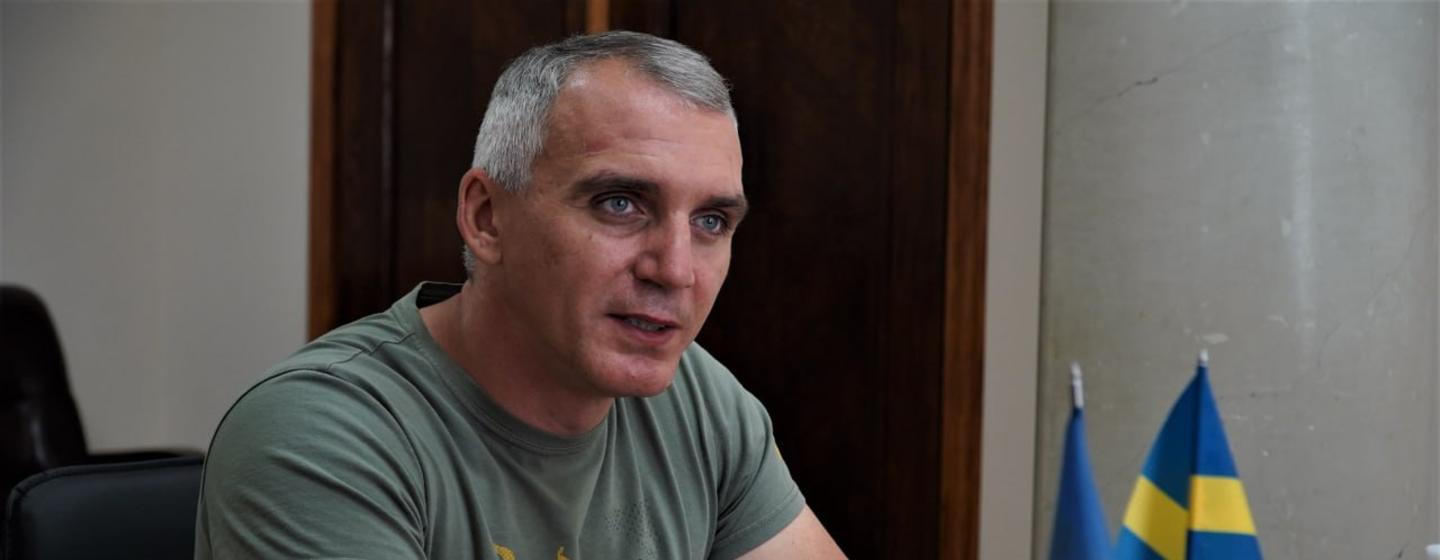First Person: Ukrainian ‘city of heroes’ plans post-invasion future
Alexander Senkevich, the Mayor of Mykolaiv, spoke to UN News about reconstruction efforts and the role of the United Nations amidst the threat of ongoing shelling.
“We were bombed for 230 days, 159 people died, and 750 were injured. A lot of the city was destroyed because there was shelling everywhere.

Alexander Senkevich, Mayor of Mykolaiv.
Despite the war, the city lived, and everything functioned. Even the journalists who came to us to talk about the consequences of the shelling said that we are cleaning everything too quickly, that they do not have time to shoot photographs.
Some residents have already forgotten about what happened. For some, the war is over. But, this is not so simple. With public transport, for example, people forget that half of our buses were taken to the front, and of those that remained, a quarter were destroyed during shelling.
Drinking water
Since April last year, we have started using water from the Southern Buh River, but it cannot be purified to a drinking level because of the salt content. The consequences of the explosion of the Kakhovka hydroelectric power station have exacerbated this problem.
Our water intake was located on the territory of the Dnipro River, 73 kilometres from the city. The station was destroyed and is currently located below seven meters of water. We cannot resume our water supply to the city from there. This is a huge problem for us right now.
UN support
We constantly feel the support of the UN, especially in the most difficult moments. We meet with representatives of the UN. They constantly collect data on the needs of the population, and they try to help us. Through UN agencies, certain needs of the city are met. We have received water, food, and other types of support for residents.
Risk of shelling
Before the war, almost half a million people lived in Mykolaiv. Today, we have registered about 350,000 people in the city, which includes about 50,000 who have fled here from other parts of Ukraine.
Life is slowly getting better. Small businesses are starting to operate again, but larger businesses still have not returned due to problems with water and electricity. The main concern, however, continues to be the risk of shelling.
Restoration of the city

Residential and office buildings have been destroyed across Mykolaiv.
Damage to the city totals $860 million, according to the Kyiv School of Economics, and that’s without taking the cost of new construction into account.
The restoration of the city is a decades-long process. When the United Nations Economic Commission for Europe invited us to take part in its UN4Mykolaiv project, we were delighted, jumped up, and voted for it with all our hands.
Our task is to not just rebuild what was destroyed, but to rethink everything, to find a new meaning for life in Mykolaiv, its economic potential, and the role of the city in the new Ukraine.
Mykolaiv as gateway to Ukraine

Municipal workers clear up the remnants of shelling in Mykolaiv.
Together with the UN, we are working on every detail planning the future of the city. This is being done not just as a project for Mykolaiv, but as a global plan – a model that can be applied to other destroyed cities of Ukraine.
We want to see a clean, beautiful Mykolaiv with comfortable places for recreation, convenient urban infrastructure, and modern schools. The people of Mykolaiv also see their city as an industrial and commercial center. In order for everything to be beautiful and well-maintained, the city needs to create businesses and jobs.
We don’t want to just live on the money of tourists, although we would like to create some kind of an amusement park in our south, like Legoland or Disneyland, where not only Ukrainians but also foreigners could come.
Ports are our main investment opportunity after the war. Before the war, we handled up to 40 per cent of the goods that were shipped in and out of Ukraine. We see Mykolaiv as the gateway to Ukraine. I say at negotiations with investors that Mykolaiv should not only be considered as a market for goods or services, but as a door to the market of the whole country.
‘City of heroes’
I would really like that our city is not forgotten after the end of the war. Locals described it as the last southern outpost of free Europe; we defended it well. I am very grateful for the interest of the UN in Mykolaiv. Mykolaiv received the title of the ‘hero city’, but we call it the ‘city of heroes’ because this applies to all its inhabitants.”